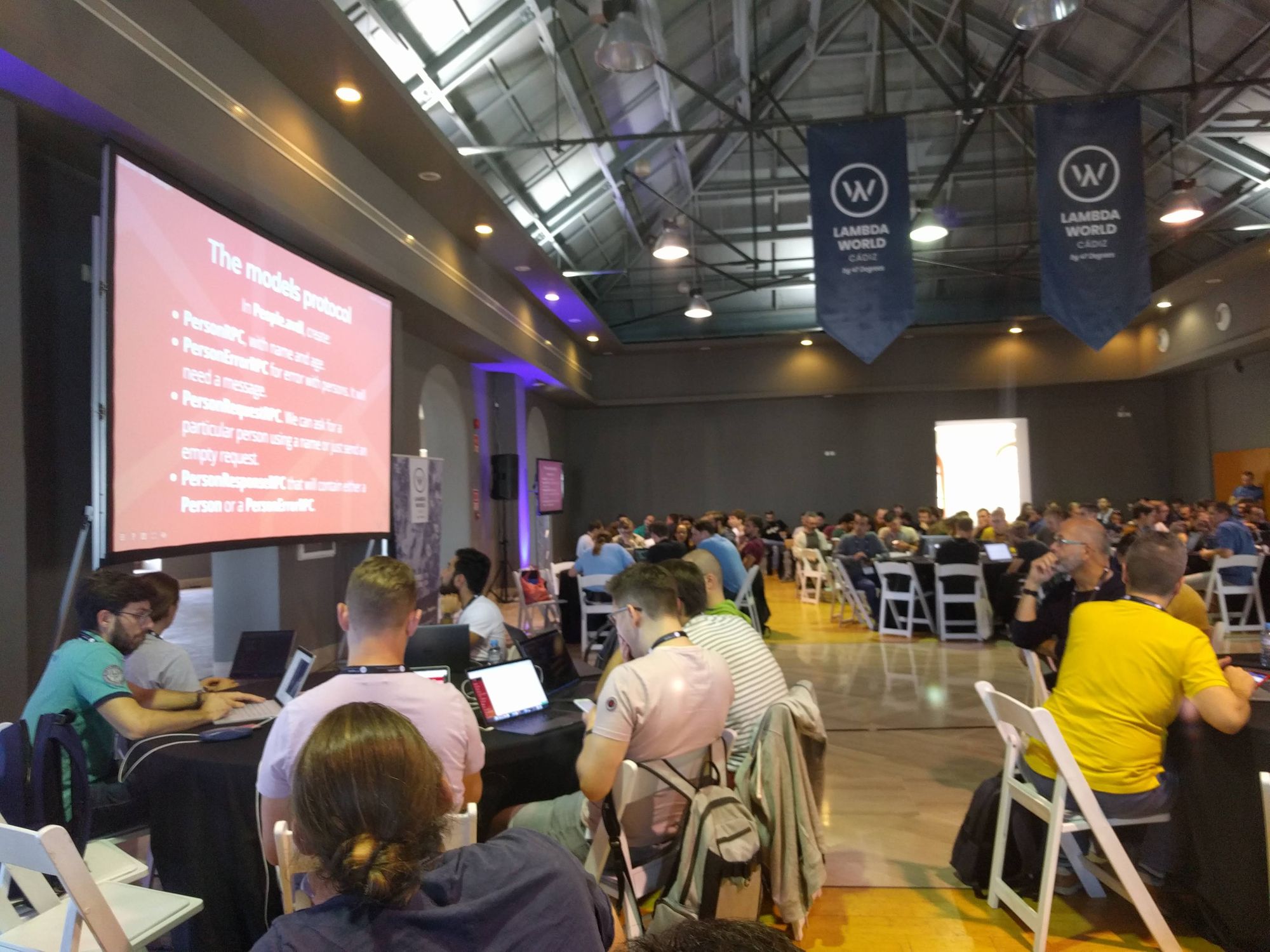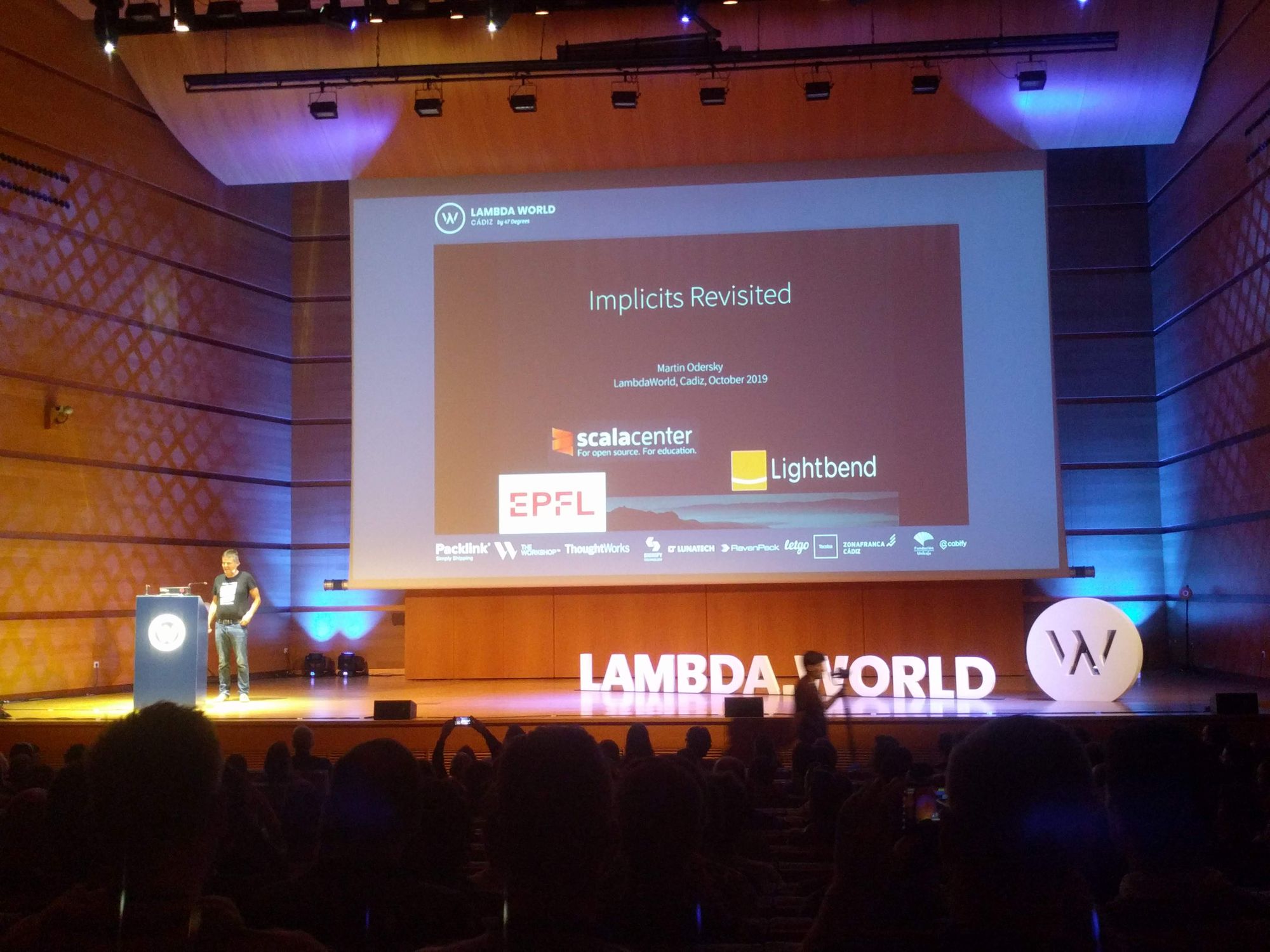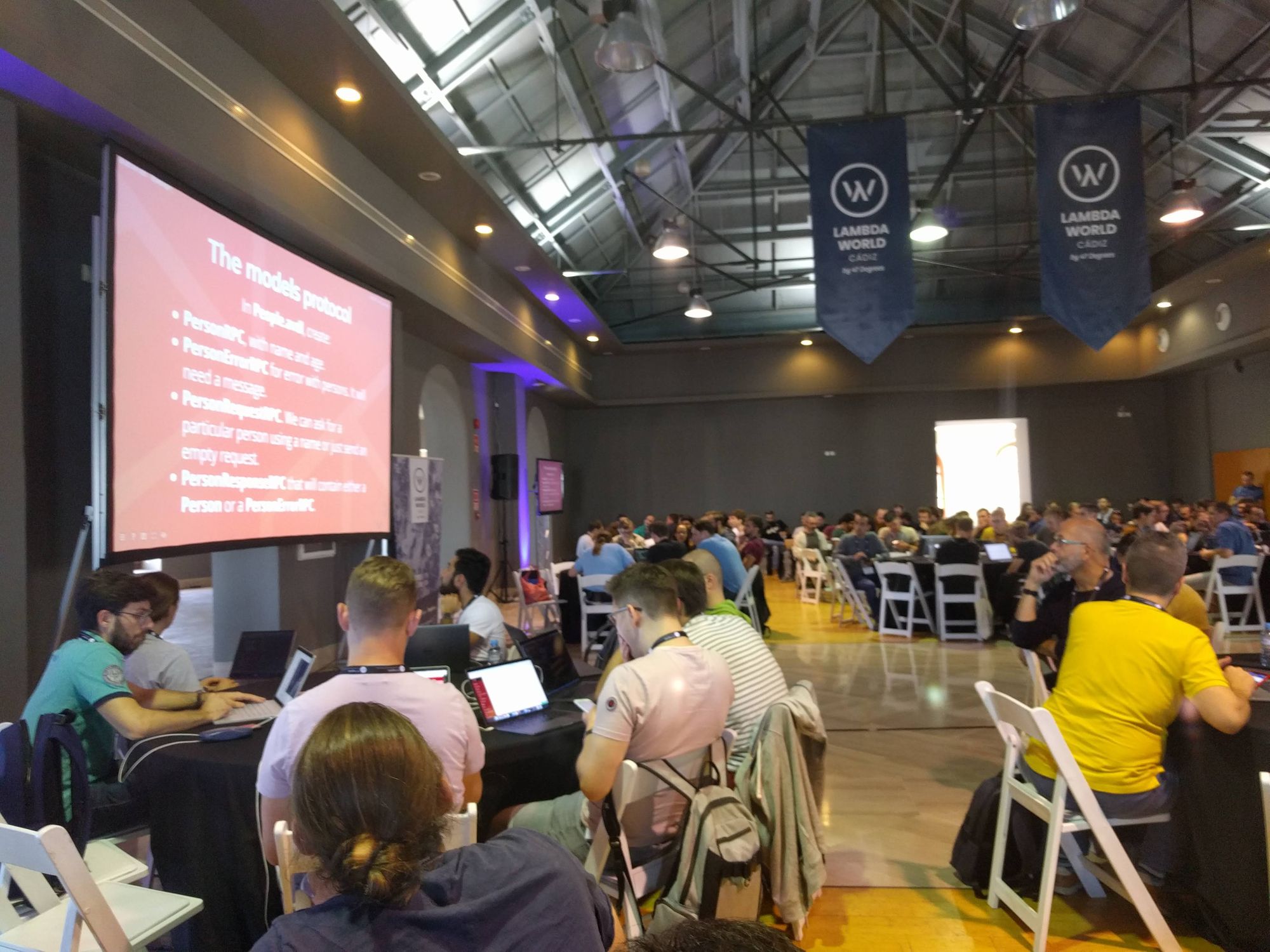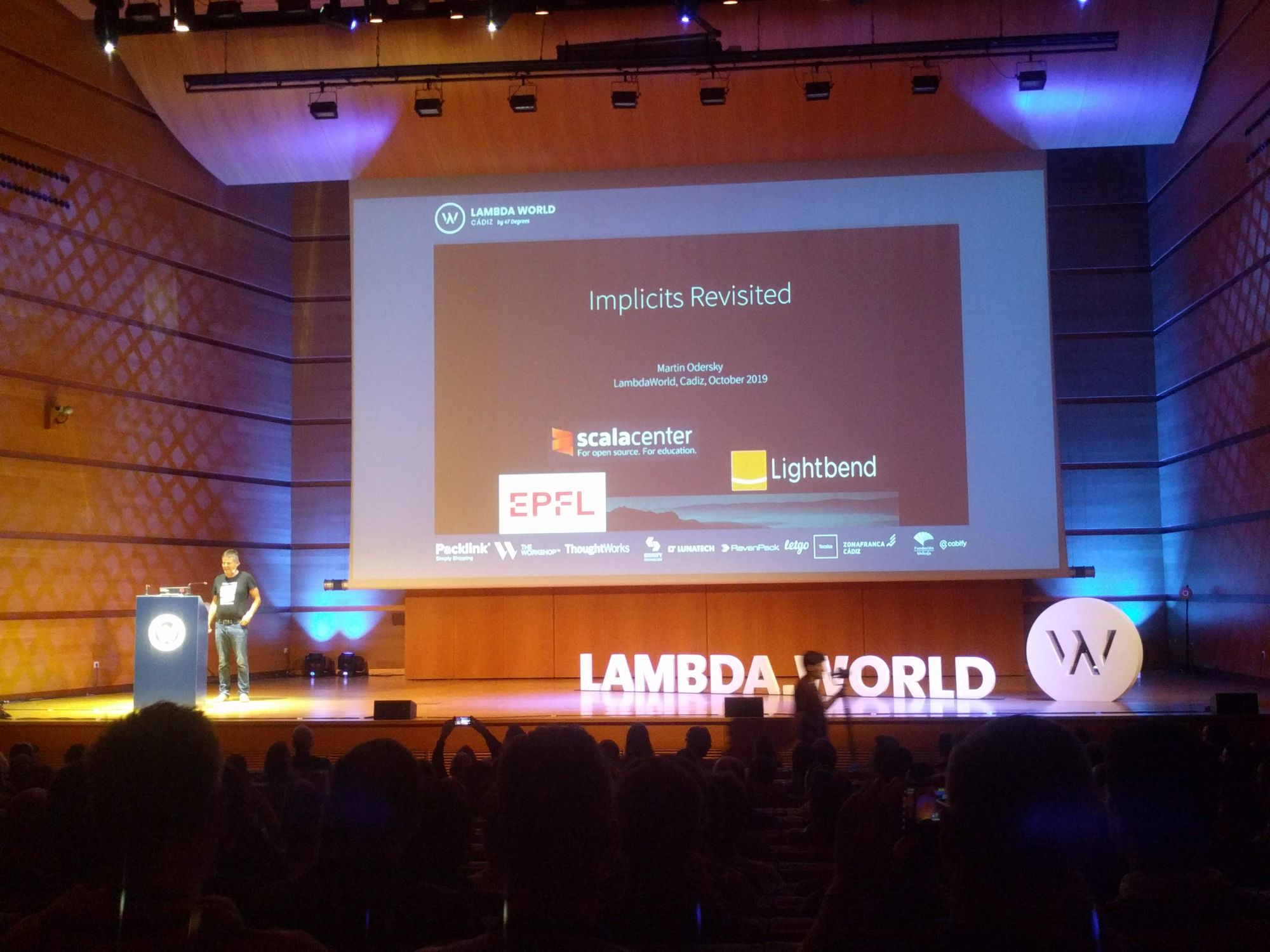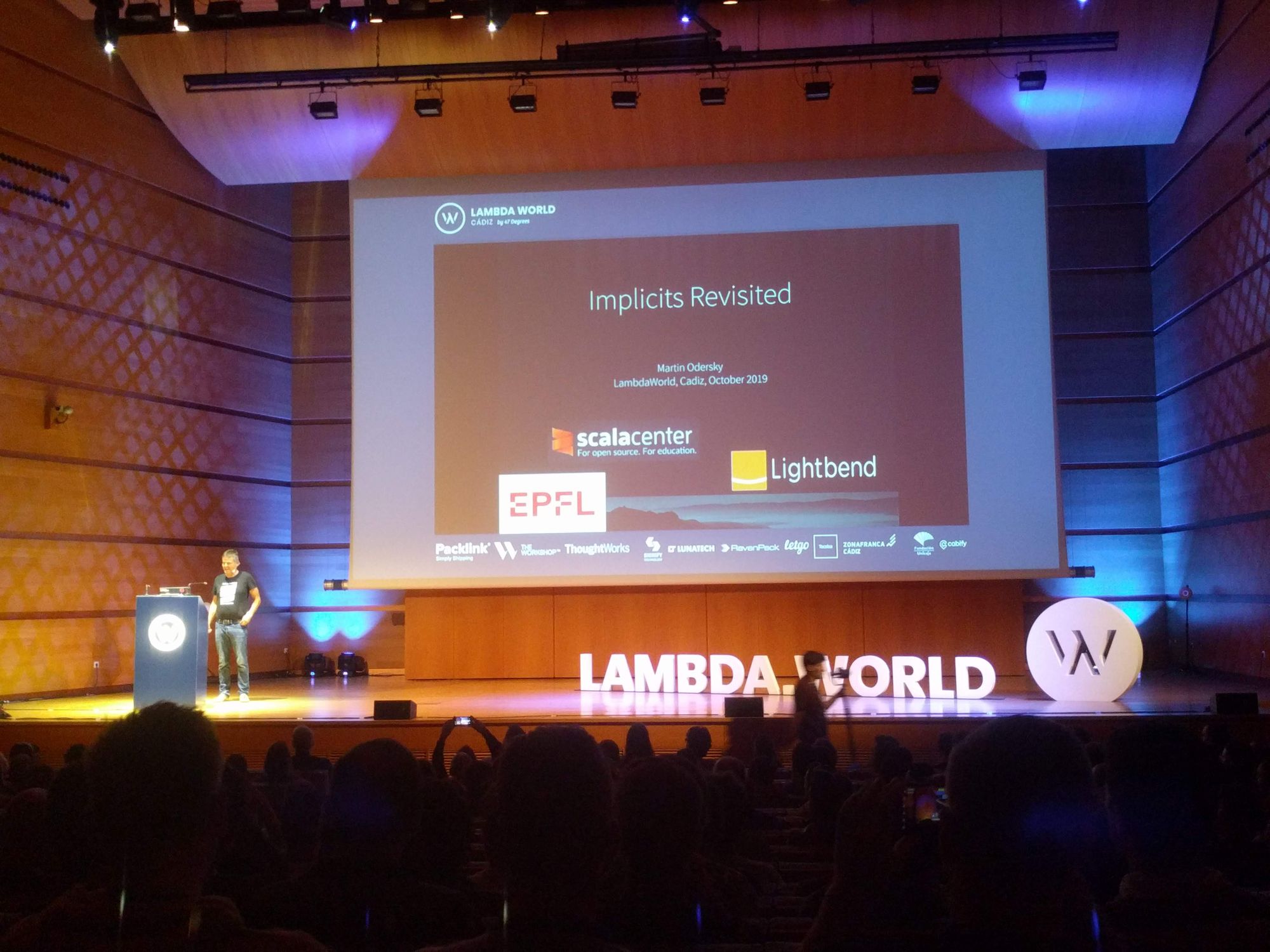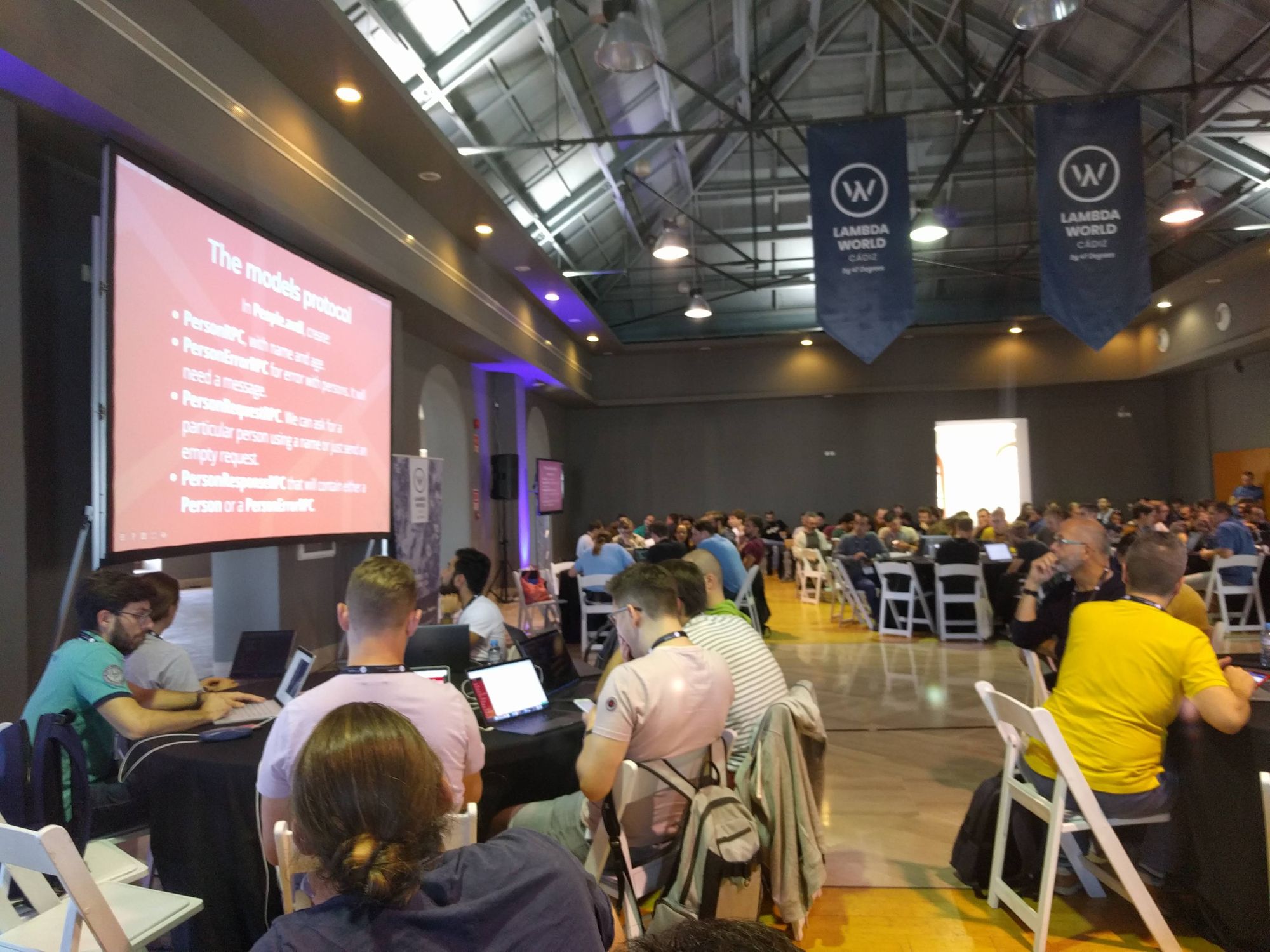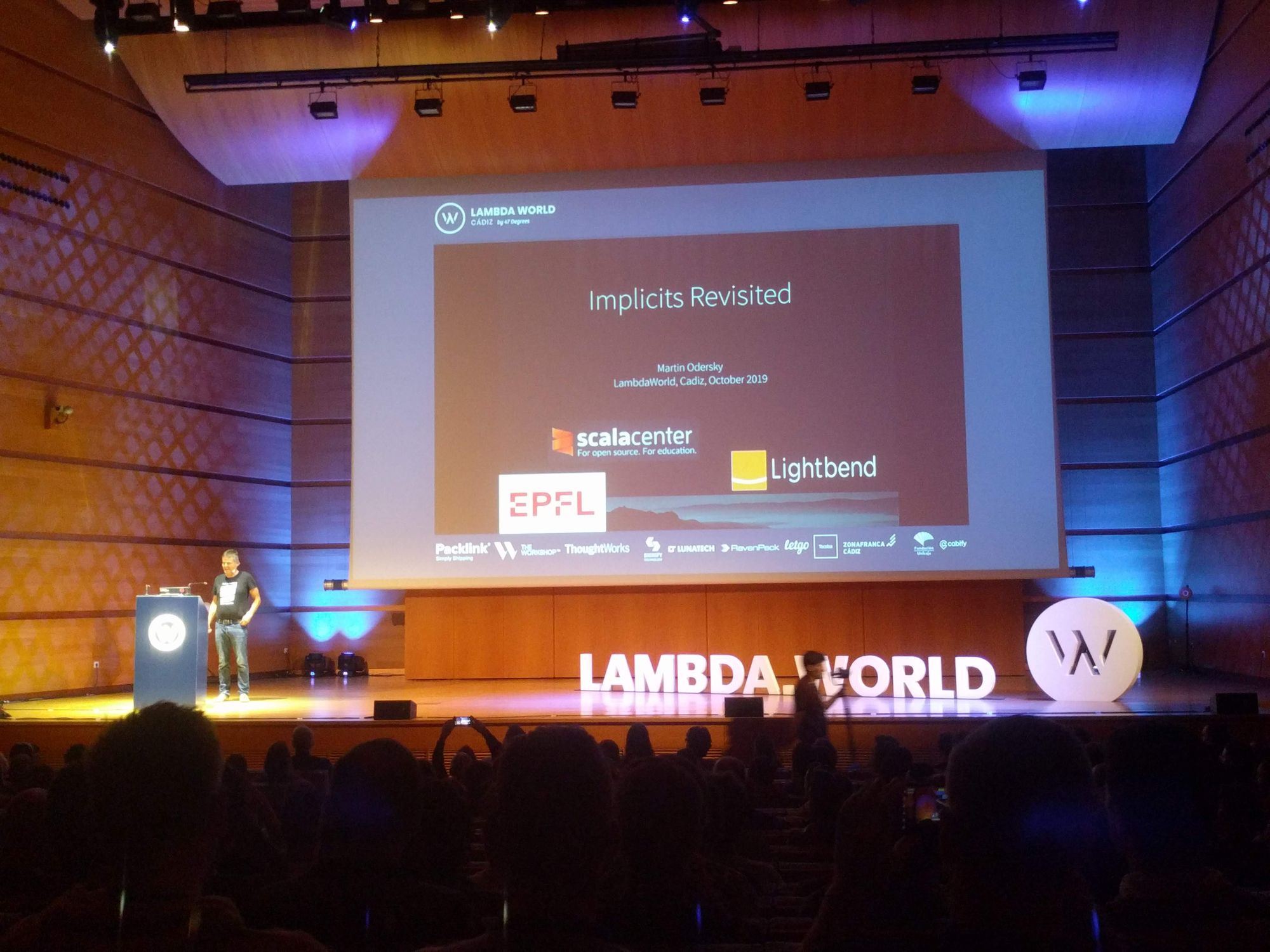Server as a function with Kotlin – http4k
Have you ever heard about the concept of “Server as a Function”? The idea is that we write our server application based on just ordinary functions, which is based on a concept outlined in the paper Your Server as a Function written and published by Twitter/Marius Eriksen. In the Kotlin world, the most prominent implementation of this concept is http4k, which the maintainers describe as an “HTTP toolset written in Kotlin with a focus on creating simple, testable APIs”. The best part about it is that http4k applications are just Kotlin functions that we can test straightforwardly. Take a look at this first example:
First http4k server example
val app: HttpHandler = { request: Request -> Response(OK).body(request.body) }
val server = app.asServer(SunHttp(8000)).start()
This code shows a fully functional http4k application consisting of a single Kotlin function app which we embedded into a SunHttp server, one example of available server implementations we may choose from. Note the type HttpHandler here, which represents one of the two essential concepts in the idea of “Server as a Function”:
- HttpHandler (
(Request) -> Response): abstraction to process HTTP requests into responses by mapping the first into the latter
- Filter (
HttpHandler -> HttpHandler): abstraction to add pre and post-processing like caching, debugging, authentication handling, and more to an HttpHandler. Filters are composable/stackable
Every http4k application can be composed of HttpHandlers in combination with Filters, both of which are simple type aliases for ordinary Kotlin function types. Http4k comes with zero dependencies if we don’t count the Kotlin standard library as one. Since http4k applications, in their pure form, only entail some nested Kotlin functions; there is no reflection or annotation processing involved. As a result, http4k applications can start and stop super quickly which also makes them a reasonable candidate to be deployed on Function-as-a-Service environments (as opposed to e.g., Spring Boot applications).
More advanced http4k application
Let’s take a look at a more advanced example of an http4k server.
val pingPongHandler: HttpHandler = { _ -> Response(OK).body("pong!") }
val greetHandler: HttpHandler = { req: Request ->
val name: String? = req.query("name")
Response(OK).body("hello ${name ?: "unknown!"}")
}
val routing: RoutingHttpHandler = routes(
"/ping" bind GET to pingPongHandler,
"/greet" bind GET to greetHandler
)
val requestTimeLogger: Filter = Filter { next: HttpHandler ->
{ request: Request ->
val start = clock.millis()
val response = next(request)
val latency = clock.millis() - start
logger { "Request to ${request.uri} took ${latency}ms" }
response
}
}
val app: HttpHandler =
ResponseFilters.GZip()
.then(requestTimeLogger)
.then(routing)
In this snippet, we can see a few exciting things http4k applications may entail. The first two expressions are definitions of HttpHandlers, in which the first one takes any response and maps it to an OK response containing “pong” in its body. The second handler takes a request, extracts a name, and greets the caller. In the next step, we apply routing to the handlers by assigning one particular route to each handler. As we can see, the pingPongHandler is used to serve a client who invokes /ping, while the greetHandler is used to cover /greet.
Routing
Routing in http4k works with arbitrary levels of nesting, which works flawlessly since routing itself results in a new HttpHandler (strictly speaking, a special kind of type RoutingHttpHandler), just like the original ones.
Filters
As mentioned before, the other important concept we want to look at is Filters. For starters, we create a requestTimeLogger that intercepts each incoming request by measuring its processing time and logging the elapsed time. Filters can be combined using the then method, which allows us to define chains of filters. The corresponding API looks like this:
fun Filter.then(next: Filter): Filter
In the example application above, we add our custom filter to one of the default filters called GZip. Once we have combined all our filters, we want to add an HttpHandler to our filter chain. Again, there’s a then function we can use to do so:
fun Filter.then(next: HttpHandler): HttpHandler
As we can see, this again results in an HttpHandler. You all probably got the idea by now – It only needs two simple types to express how an HTTP server should operate.
The shown GZip filter is just one of many default filters we may choose from. Others cover concerns like caching, CORS, basic authentication or cookie handling and can be found in the org.http4k.filter package.
Calling HttpHandlers
So what did we get out of that nesting which resulted in yet another HttpHandler called app? Well, this itself does not entail running an actual server yet. However, it describes how requests are handled. We can use this object, as well as other separate HttpHandlers and Filters, and invoke it directly (e.g. in our tests). No HTTP required. Let’s see this in action:
//call handler directly
val handlerResponse: Response = pingPongHandler(Request(GET, "/any"))
//call handler through routing
val routingCallResponse: Response = app(Request(GET, "/ping").header("accept-encoding", "gzip"))
app.asServer(Jetty(9000)).start()
Http4k comes with its own implementations of a Request and a Response, first of which can be used to invoke an HttpHandler. Calling the unattractive pingPongHandler yields something similar to HTTP/1.1 200 OK pong! while calling the final app handler gives us a gzipped response due to the applied GZip filter. This call also implies a log informing about the duration of the request: 2019-09-20T21:22:55.300768Z LOG - Request to /ping took 3ms. Please note that, while it was fine to call pingPongHandler with a random URI (/any), we had to use the designated /ping URI when invoking the routing-backed app.
Last, but not least, we start our very own http4k HttpHandler as a server on a Jetty with port 9000. Find a list of available server implementations here.
Lenses
One of the things a sophisticated HTTP app has to deal with is taking stuff out and also putting stuff into HTTP messages. When we take parameters out of requests, we also care about validating these values. Http4k comes with a fascinating concept that helps us deal with the stated concerns: Lenses.
Basic Definition
Lenses, according to multiple resources, were first used in the Haskell world and are a functional concept that may appear slightly hard to understand. Let me try to describe it in a shallow, understandable manner. Let’s say we have a class Whole which comes with different fields part1, part2, and so on. A lens basically composes a getter and a setter focusing on precisely one part of Whole. A Part1Lens lens getter would take an instance of Whole to return the part it is focused on, i.e., part1. The lens setter, on the other hand, takes a Whole along with a value to set the focused part to and then returns a new Whole with the updated part. Remember that a lens can be used to both get and set a part of a whole object. Now, let’s learn how this concept helps us with handling HTTP messages.
Lenses in http4k
Following the basic idea of a lens, http4k lenses are bi-directional entities which can be used to either get or set a particular value from/onto an HTTP message. The corresponding API to describe lenses comes in the form of a DSL which also lets us define the requirement (optional vs. mandatory) of the HTTP part we are mounting a lens on. Since HTTP messages are a rather complex container, we can have lenses focusing on different areas of the messages: Query, Header, Path, FormField, Body. Let’s see some examples of how lenses can be created:
// lens focusing on the path variable name
val nameLens = Path.string().of("name")
// lens focusing on a required query parameter city
val requiredQuery = Query.required("city")
// lens focusing on a required and non empty string city
val nonEmptyQuery = Query.nonEmptyString().required("city")
// lens focusing on an optional header Content-Length with type int
val optionalHeader = Header.int().optional("Content-Length")
// lens focusing on text body
val responseBody = Body.string(ContentType.TEXT_PLAIN).toLens()
So far, the API for creating lenses looks more or less straightforward but what about using them on a target? Here’s the pseudo code syntax for
a) Retrieving a value: <lens>.extract(<target>), or <lens>(<target>)
b) Setting a value: <lens>.inject(<value>, <target>), or <lens>(<value>, <target>)
Use Lens to Retrieve value from HTTP Request
Reusing the greet sample from earlier, let’s modify our code to make use of lenses when retrieving a value:
val nameLens: BiDiLens<Request, String> =
Query.nonEmptyString().required("name")
val greetHandler: HttpHandler = { req: Request ->
val name: String = nameLens.extract(req) //or nameLens(req)
Response(OK).body("hello $name")
}
We create a bidirectional lens focusing on the query part of our message to extract a required and non-empty name from it. Now, if a client happens to call the endpoint without providing a name query parameter, the lens automatically returns an error since it was defined as “required” and “nonEmpty”. Please note that, by default, the application exposes much detail to the client announcing the error as org.http4k.lens.LensFailure: query 'name' must be string including a detailed stack trace. Rather than that, we want to map all lens errors to HTTP 400 responses which implies that the client provided invalid data. Therefore, http4k offers a ServerFilters.CatchLensFailure filter which we can easily activate in our filter chain:
// gzip omitted
val app: HttpHandler = ServerFilters.CatchLensFailure
.then(requestTimeLogger)
.then(routing)
Use Lens to Set value in HTTP Request
After looking into extracting values from HTTP messages, how can we use the nameLens to set a value in an HTTP request?
val req = Request(GET, "/greet/{name}")
val reqWithName = nameLens.inject("kotlin", req)
// alternatively, http4k offers a with function that can apply multiple lenses at once
val reqWithName = Request(GET, "/greet/{name}").with(
nameLens of "simon" //, more lenses
)
The example shows how we create an instance of Request and inject a value via one or many lenses. We can use the Lens::inject function to specify the value we want to set into an arbitrary instance of Request. Now that we saw a basic example of a string lens, we want to dig into handling some more advanced JSON content.
JSON handling
We can choose from several JSON implementations, including e.g., the common Gson and Jackson library. I personally prefer Jackson as it comes with a great Kotlin module (Kudos to my friend Jayson Minard 😉). After adding a JSON format module to our application, we can start marshaling objects to and from HTTP messages using lenses. Let’s consider a partially complete REST API that manages persons:
[...]
import org.http4k.format.Jackson.auto
class PersonHandlerProvider(private val service: PersonService) {
private val personLens: BiDiBodyLens<Person> = Body.auto<Person>().toLens()
private val personListLens: BiDiBodyLens<List<Person>> = Body.auto<List<Person>>().toLens()
fun getAllHandler(): HttpHandler = {
Response(OK).with(
personListLens of service.findAll()
)
}
fun postHandler(): HttpHandler = { req ->
val personToAdd = personLens.extract(req)
service.add(personToAdd)
Response(OK)
}
//...more
}
In this example, we see a class that provides two handlers representing common actions you would expect from a REST API. The getAllHandler fetches all currently stored entities and returns them to the client. We make use of a BiDiBodyLens<List<Person>> (BiDirectional) that we created via the org.http4k.format.Jackson.auto extension for Jackson. As noted in the http4k documentation, “the auto() method needs to be manually imported as IntelliJ won’t pick it up automatically”. We can use the resulting lens like already shown earlier by providing a value of type List<Person> and inject it into an HTTP Response as shown in the getAllHandler implementation.
The postHandler, on the other hand, provides an implementation of an HttpHandler, that extracts a Person entity from the request and adds it to the storage. Again, we use a lens to extract that JSON entity from the request easily.
This already concludes our sneak peek on lenses. As we saw, lenses are a fantastic tool that lets us extract and inject parts of an HTTP message and also provides simple means of validating those parts. Now, that we have seen the most fundamental concepts of the http4k toolset, let’s consider how we can test such applications.
Testing
Most of the time, when we consider testing applications that sit on top of a web framework, we have to worry about details of that framework which can make testing harder than it should be. Spoiler Alert: This is not quite the case with http4k 🎉
We have already learned that HttpHandlers, one of the two core concepts in the http4k toolset, are just regular Kotlin functions mapping requests to responses and even a complete http4k application again is just an HttpHandler and thus a callable function. As a result, entire and partial http4k apps can be tested easily and without additional work. Nevertheless, the makers of http4k thought that it would still be helpful to provide some additional modules which support us with testing our applications. One of these modules is http4k-testing-hamkrest, which adds a set of Hamkrest matchers, we can use to verify details of message objects more easily.
Http4k Handler Test Example
import com.natpryce.hamkrest.assertion.assertThat
import org.http4k.core.Method
import org.http4k.core.Request
import org.http4k.core.Status
import org.http4k.hamkrest.hasStatus
import org.junit.jupiter.api.Test
class PersonHandlerProviderTest {
val systemUnderTest = PersonHandlerProvider(PersonService())
@Test
fun getAll_handler_can_be_invoked_as_expected(){
val getAll: HttpHandler = systemUnderTest.getAllHandler()
val result: Response = getAll(Request(Method.GET, "/some-uri"))
assertThat(result, hasStatus(Status.OK))
}
}
This snippet demonstrates a test for the PersonHandlerProvider we have worked with earlier already. As shown, it’s pretty straightforward to call an HttpHandler with a Request object and then use Hamkrest or whatever assertion library you prefer to check the resulting Response. Testing Filters, on the other hand, is “harder”. To be honest though, it’s just one tiny thing we need to do on top of what we did with handlers. Filters map one HttpHandler into another one by applying some intermediate pre or post-processing. Instead of investigating the mapping between handlers itself, it would be more convenient to again send a Request through that filter and look into the resulting Response. The good news is: It’s super easy to do just that:
Http4k Filter Test Example
val addExtraHeaderFilter = Filter { next ->
{
next(it).header("x-extra-header", "some value")
}
}
@Test
fun adds_a_special_header() {
val handler: HttpHandler = addExtraHeaderFilter.then { Response(OK) }
val response: Response = handler(Request(GET, "/echo"))
assertThat(response, hasStatus(OK).and(hasHeader("x-extra-header", "some value")))
}
We have a Filter called addExtraHeaderFilter that adds a custom header to a processed request and then forwards it to the next filter. The goal is to send a simple request through that filter in our test. What we can do, is making the filter a simple HttpHandler by adding a dumb { Response(OK) } handler to it via then. As a result, we can invoke the newly created handler, now containing our very own filter, and investigate whether the resulting Response object contains the new expected header. There we go – both handlers and filters got tested 🙃
To wrap up, I want to say that this was just a quick look at the happy paths of testing http4k apps with mostly familiar tools. It might become necessary to test against the actual running server and verify Responses on a lower level, e.g., comparing the resulting JSON directly. Doing that is also possible and supported via the Approval Testing module. Later in this article, we want to look at the client module of http4k, which again opens up some new possibilities.
Serverless
One of the hottest topics of our time is Serverless computing. You know, that thing where we can run our code on other people’s… servers. One part of it is known as Function as a Service, or FaaS and the most common ones include AWS Lambda, Google Cloud Functions, and Microsoft Azure Functions. The general idea is that these vendors provide a platform where we can deploy our code, and they take care of managing resources and scaling our application on demand. One of the downsides of Serverless is that our functions may be spun down by the platform if it’s not being used until someone wants to use it again, which would require a fresh startup. What does that mean for us? We need to choose target platforms and tools which allow a fast start-up of our application. Spring on the JVM in its classical form, for instance, would probably not be the best tool for that use case. However, as you can image, http4k with its small footprint and super quick start-up times is a great choice. It even comes with native support for AWS Lambda.
I won’t dive much deeper into this topic as part of this article, but I’m planning to write a much more detailed post on what we can do with http4k on a FaaS platform. Stay tuned.
Client as a Function
By now, we have learned how cool http4k is and why it’s a great tool to develop server applications. HTTP Servers don’t make much sense without clients using them, so we want to conclude this article by looking at the other side – Clients as a Function.
The http4k core library comes with everything we need to get started with clients. Clients in http4k again are just a special form of an HttpHandler, as we can see in this little snippet:
val request = Request(Method.GET, "https://kotlinexpertise.com/sitemap.xml")
val client: HttpHandler = JavaHttpClient()
val response = client(request)
The shown JavaHttpClient is the default implementation that comes with the core library. If we were to prefer OkHttp, Apache, or Jetty instead, we would find a related module to replace the default. Since we program against interfaces (clients are HttpHandlers), it’s not a big deal to swap out implementations at any time. The core library obviously comes with several default Filters we can apply to our client which can be found in the ClientFilters.kt file that contains stuff like BasicAuth, Gzip and more stuff you’d expect for a client. The fact that all concepts of http4k servers, including handlers, filters and also lenses, can be reused in http4k clients opens up quite a few possibilities so that it can make much sense to e.g., use the client module to test your servers an vice versa.
Summary and Lookout
I personally learned to appreciate http4k a lot in the last couple of weeks. Once you’ve made yourself comfortable with the basic concepts, it becomes straightforward to develop (which includes testing) server applications quickly. Http4k comes with an incredible list of supported concepts and technologies including OAuth, Swagger, Websockets, XML and many, many more. Its modular nature allows us to add functionality by applying dependencies as needed, and due to its simple base types, it is highly extensible. Http4k is a toolset that allows us to write applications with quick startup times which also makes it a valid alternative when it comes to FaaS and Serverless computing. As if this wasn’t enough, the toolset also includes sophisticated means for writing HTTP clients, which we learned about in the last section. Overall, http4k is a promising technology that you should definitely consider when choosing your next HTTP toolset.
If you want to learn more about Kotlin and its fantastic language features, please have a look at my talk “Diving into advanced language features”.
The post Server as a function with Kotlin – http4k appeared first on Kotlin Expertise Blog.




